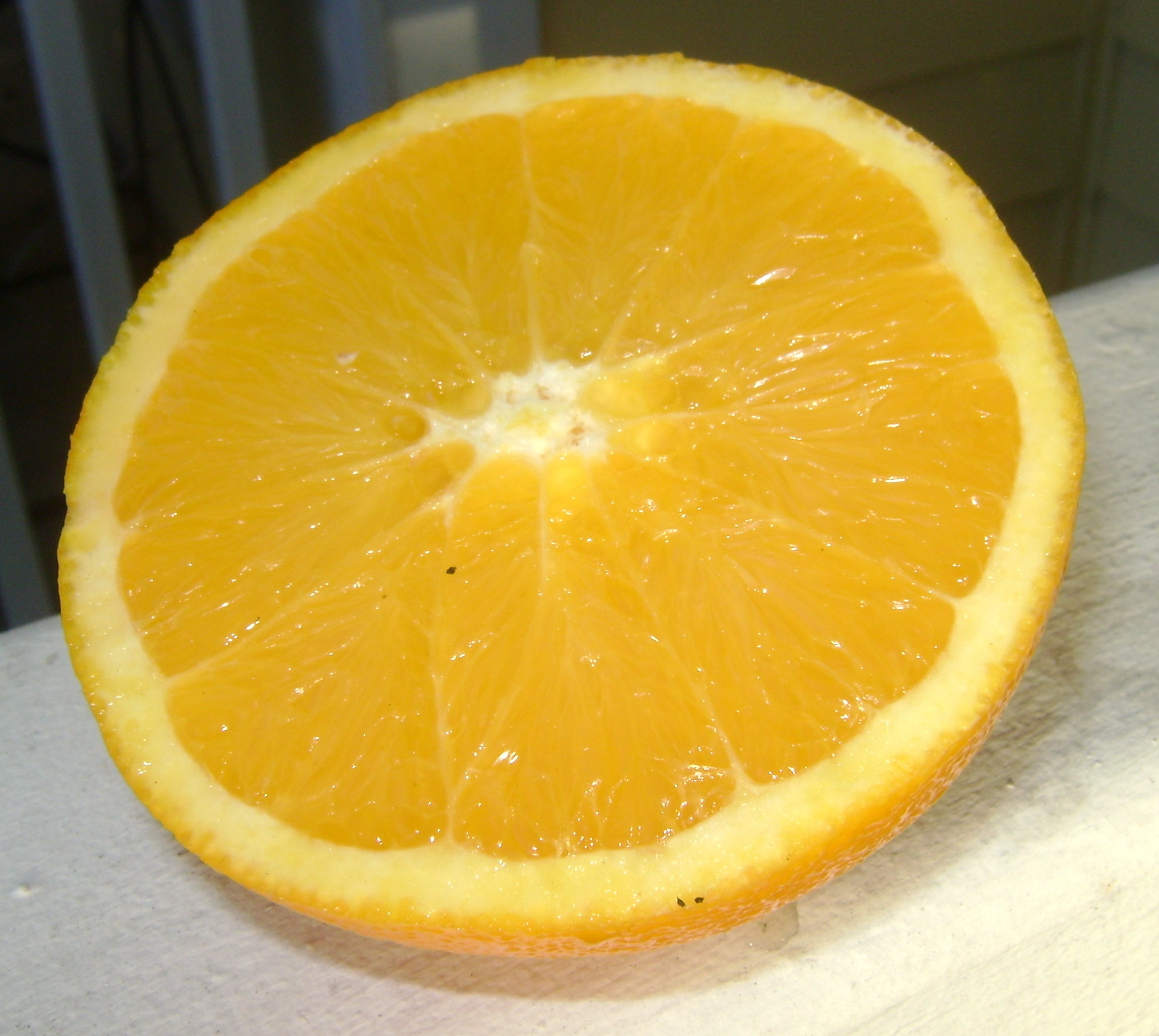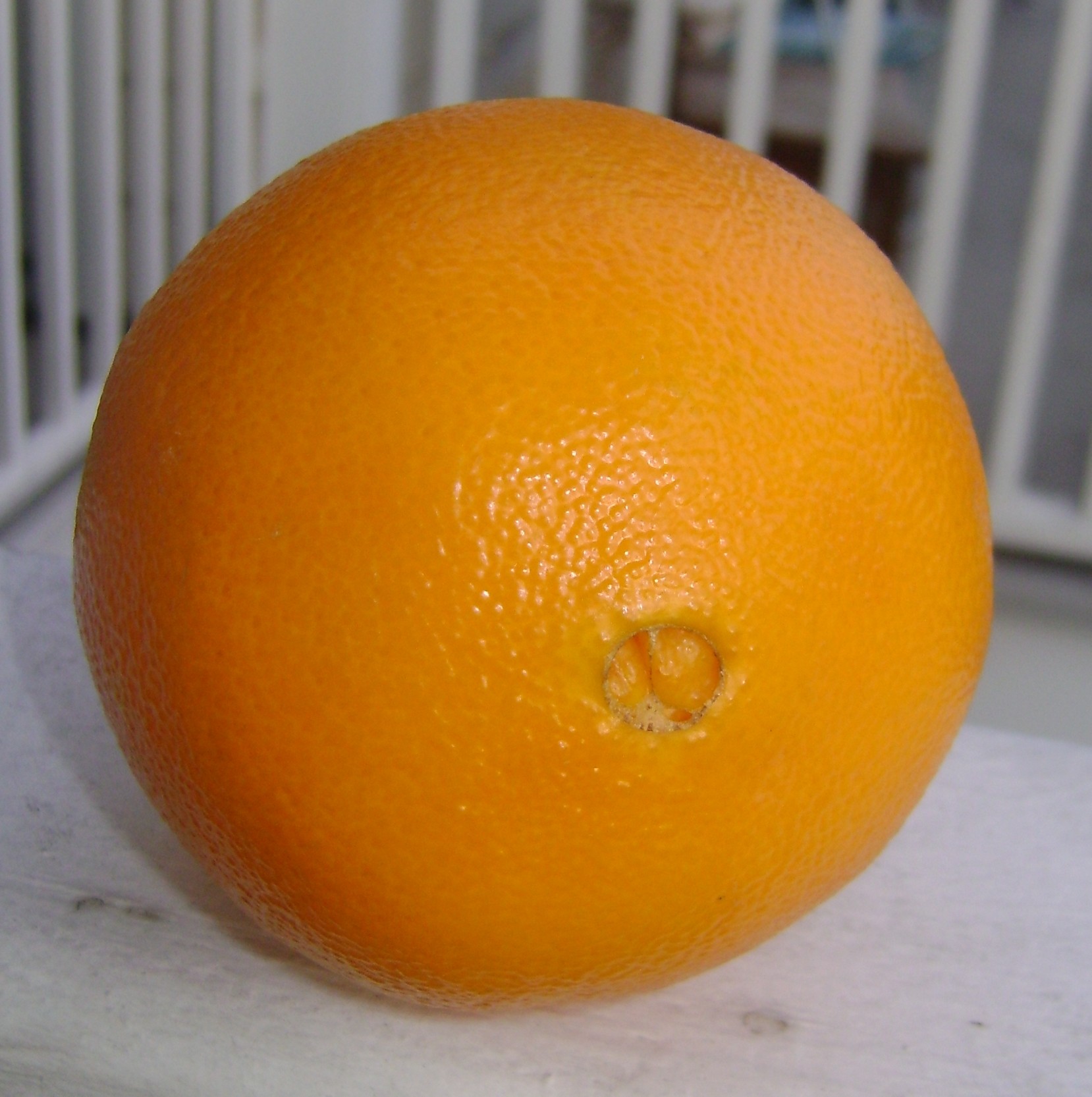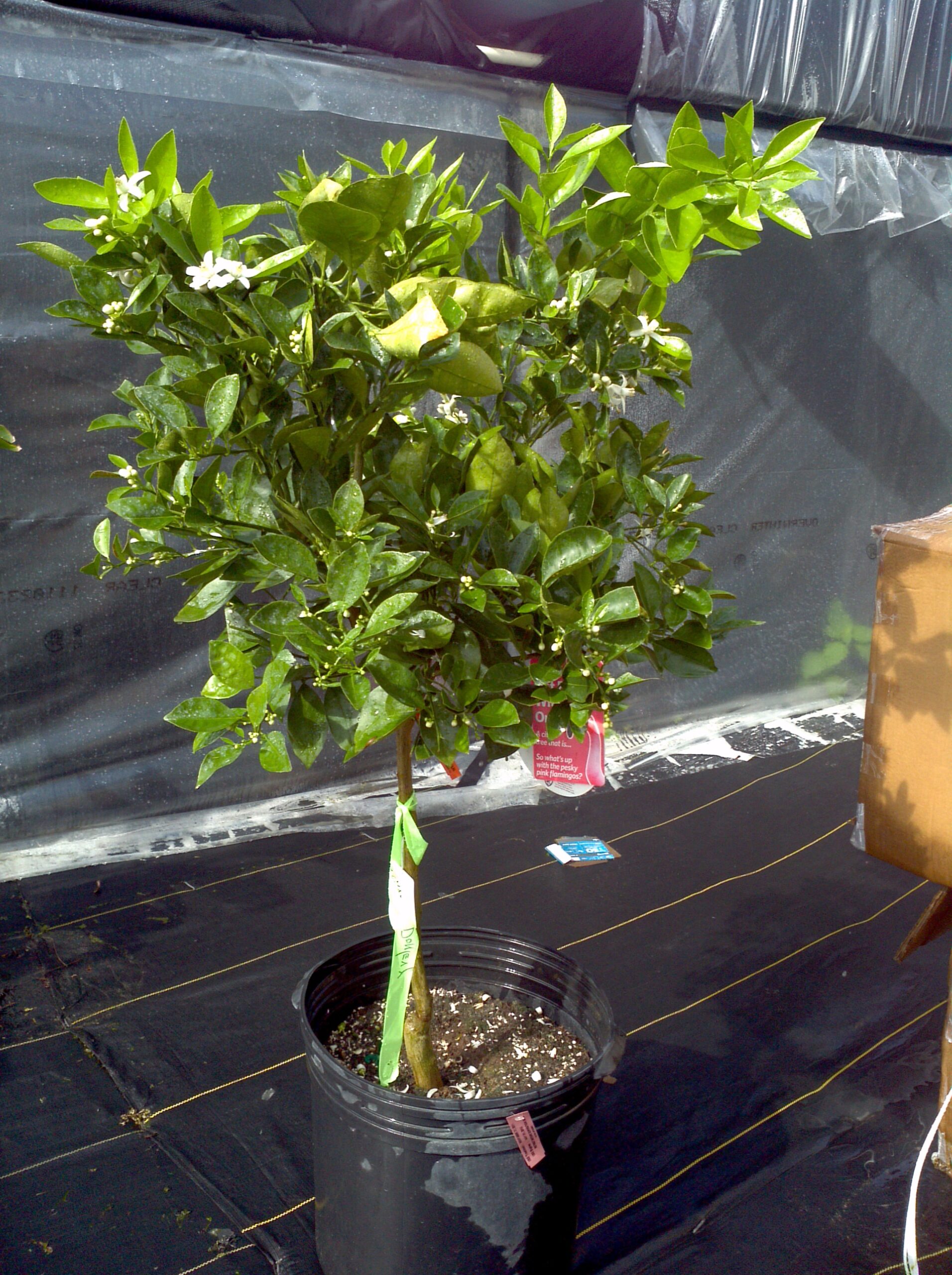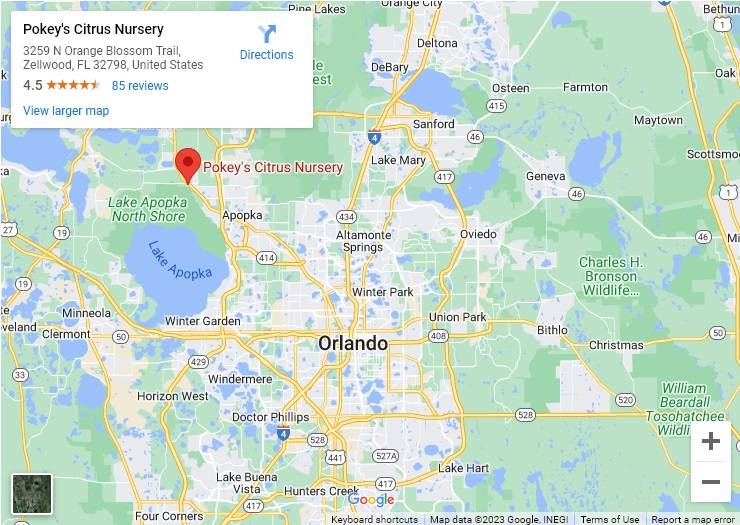This sweetest of oranges grows on a dense evergreen that can grow up to 30 feet. It is the most common orange to use when grown for eating because of the limited number of seeds inside. The white orange blossoms, arranged in clusters of 1-6, foretell the orange’s sweetness with a delicate scent pleasing to the nose. The leaves are shiny and leathery, oblong and have narrow “wings” on their stems. Wouldn’t you know that along with all this sweetness, the twigs are thorny.
The flowers bloom in the spring and quite often are still on the trees when new flowers are blooming. By the way, it’s best to leave them on the tree until you want to use them; keeps them fresh and juicy. Many of our gardener friends build a frame of PVC pipe (easy) or 2×4 lumber around their citrus trees in winter and cover with clear plastic sheeting when freezing temperatures threaten. The first bite of the navel orange makes it more than worth it—and oh, that freshly-squeezed juice in the morning. Can’t beat it!
This is a 10 gallon citrus tree you can find in an Orlando nursery. This tree will typically produce a few oranges in the first couple years but increase drastically as they get bigger and more acclimated to their new environment in their yard.





